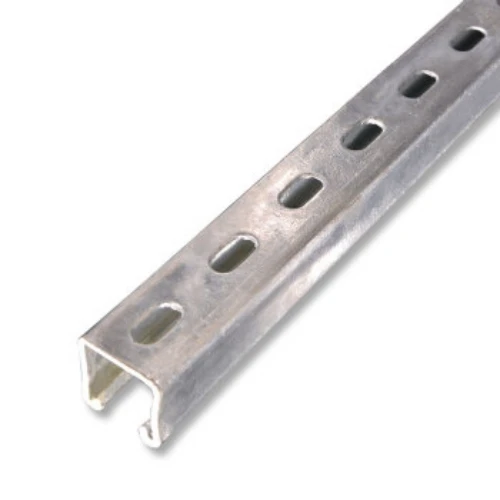Cell on Wheels COWs and Monopoles both compete in the telecommunications infrastructure. All of these platforms have their positives and negatives, and in a field that is varying on mobile online access they provide different uses. In this article, we dive deep into these technologies by focusing on their fast deployment and scaling capabilities, flexibility in achieving a temporary network solution as well financial views.
COWs vs Monopoles: The Instant GratificationProblem
COWs are designed to scurry about, sort of like a ninja with boots on hence super rapid connectability. Where it can take months for a standard monopole to be planned, zoned and constructed in the traditional process; on demand COWs may go erect and activate within hours or days. Quick to deploy so perfect for disaster recovery or you need more seats quickly like a concert /serious restering 30,000 people. This mobile piece has also led to the installation of COWs where coverage is needed versus using more stationary monopoles that would need a higher-quality install in order for them to stay.
Cow vs monopole scalability
This allocation on demand and copy-on-write are great at scalability. This makes them up- and downscale COWs in relation to actual live network demands, greatly adding that needed flexibility for the sharp mobile operator. This is a stark contrast with monopoles, which are an installed base that cannot be easily flexed up or down. COWs serve as a flexible shock absorber for traffic seasonality or unexpected growth, allowing time to accommodate additional more permanent infrastructure changes.
COWs vs. Monopoles- Flexibility & Adaptability
Portable COWs are arguably their biggest selling point. They bring a portable behavior for the network overhead that is temporary or changing in nature, as contrasted with ground-based fixed monopoles which belongs to long-lived deployments. Monopoles with steady-state outputs for areas of consistent build-up are perfect, but the fixed output does not suit transient deployments or mobility requirements. Detailed parametric study also demonstrates that COWs are dynamic fillers which can support, but not substitute the stability given by monopoles to provide higher availability of capacity enhancements (reliability targeted improvements) or temporary emergency relief. In most cases this is the first question we have to ask in respect of what you face: dynamic network solution OR static.
Differing methods of using COWs to bridge temporary network gaps vs. standard monopole limitations
COWs are deployed temporarily when the optimised network is required, e.g., disaster recovery or at construction sites. During the critical days immediately following a disaster, they can move rapidly and thus re-establish vital communications in areas where standard infrastructure is disrupted or has not been built. On the other hand, monopoles are inherently permanent and hence may not be suitable for an ad-hoc fashion of filling in short lived connectivity needs. The process for applying the updates may be a bit heavy handed, and not real-time enough to respond with alacrity in fast moving incidents. This last property is important as COWs are crucial for maintaining the network connectivity in transitional periods and proves, that monopoles have a general limitation when facing temporal agnostic challenges.
Charts: AuthorOwn Displayof Data from COW Deployments vs. Monopoles; JPARK-M )
COWs offer an economical method of temporary or emergency deployment in financial contexts, because they are not single use. These first investments are the COW unit, as well cost of operation that you may just consider it some tool to collaborate on your future mobilization somewhere else or other case. But monopoles need huge initial capital for site acquisition cost, the construction part as well as operations & maintenance also nearly 15-20% more than conventional towers. While it might offer a long-term ROI if you have an easy-to-predict, stable service delivery in particular use-cases (with the relatively low area cost (1-3k) ), but with its upfront costs and sunk factor of these units they can be less attractive overall to certain operators than GNSS or even phased array solutions - especially for short term deploys that are likely to changes regularly. This provides COWs with a key economic advantage, particularly for operators looking to maintain more options in their network build-out moves.
But, I realize the criticality of Cell on Wheels and monopoles can fall within this telecommunications infrastructure ecosystem. COWs are faster to move in and out of service, they're more scalable/ flexible for when a temporary coverage need or emergency response arises. Monopoles specifically offers a solution to omnipresent network infrastructure. This means understanding the specific strengths and weaknesses of each technology so that we use them where appropriate in order to improve our digital communication networks as a whole, making it more adaptive resiliant.
Table of Contents
- COWs vs Monopoles: The Instant GratificationProblem
- Cow vs monopole scalability
- COWs vs. Monopoles- Flexibility & Adaptability
- Differing methods of using COWs to bridge temporary network gaps vs. standard monopole limitations
- Charts: AuthorOwn Displayof Data from COW Deployments vs. Monopoles; JPARK-M )

 EN
EN
 AR
AR
 DA
DA
 NL
NL
 FI
FI
 FR
FR
 DE
DE
 EL
EL
 HI
HI
 IT
IT
 NO
NO
 PL
PL
 PT
PT
 RO
RO
 RU
RU
 ES
ES
 SV
SV
 ID
ID
 LV
LV
 SR
SR
 SK
SK
 UK
UK
 SQ
SQ
 ET
ET
 HU
HU
 FA
FA
 AF
AF
 MS
MS
 GA
GA
 CY
CY
 UR
UR
 EO
EO
 LA
LA
 MN
MN
 TG
TG
 UZ
UZ
 HAW
HAW
 KY
KY
 XH
XH


